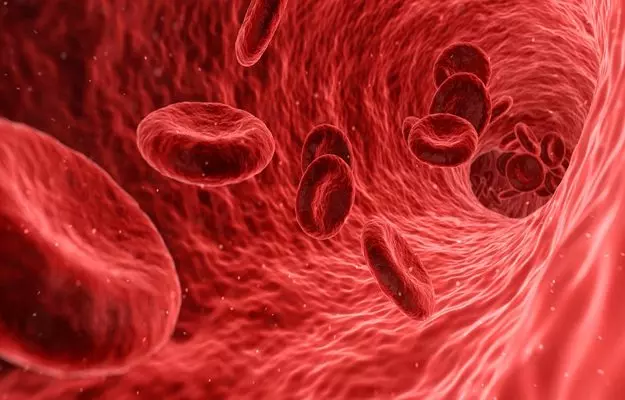We have all got our haemoglobin levels checked at least once in our lives. Haemoglobin is an essential part of red blood cells (RBCs) which transport oxygen to the entire body. Heme is the part of haemoglobin that binds with oxygen and globin is the protein that surrounds and protects heme. The normal concentration of haemoglobin in an adult is around 14 to 18 grams per deciliter of blood in men and 12 to 16 grams per deciliter of blood in women.
The RBC is an oval-shaped biconcave disc which contains haemoglobin - for this reason, the RBC is also known as the sac of haemoglobin. The percentage of haemoglobin in a single red blood cell is around 33%.
Our blood gets 97% of its oxygen from the lungs and the remaining 3% gets absorbed in the plasma. Haemoglobin enables the blood to carry 30 to 100 times more oxygen than would have been possible if the body were to transport oxygen only through plasma. When the blood reaches the lungs, the haemoglobin present in the blood binds with oxygen molecules and releases it into the blood capillaries. The blood capillaries then pass the oxygen on to different parts.
Each molecule of haemoglobin contains four atoms of iron. Each iron atom binds with one molecule of oxygen. Also, iron is responsible for giving blood its red colour. Whenever there is a deficiency of iron in the body, the production of heme gets hampered. This causes the levels of haemoglobin to go down.
Here's what you need to know about the functions and normal limits of haemoglobin in a person’s body:
































